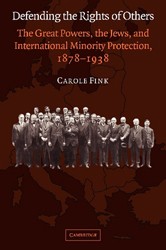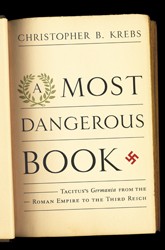One of the challenges of writing a history of Judaism is where to begin. Martin Goodman, a professor of Jewish studies at the University of Oxford, opens his book A History of Judaism by exploring this question. Considering several possibilities from which to begin — the patriarchs, Moses, or the reconstruction of the Jewish nation under Ezra — Goodman settles on starting with the first century C.E. and the writings of Josephus, the Jewish general-turned-Roman historian. Goodman asserts that Josephus’ account is that of a “learned insider versed both in the traditions of the Jews and in the most advanced techniques in his time of scientific investigation into the past.” With this explanation, A History of Judaism begins its analysis.
Goodman divides his book into six sections. The first three explore Jewish history through the middle of the Renaissance, and the final three bring the reader to the present day. Each section is further divided into chapters that focus on a group that influenced Judaism at that time. For example, Goodman devotes chapter eleven to the Rabbis of the Babylonian Talmud. “The legacy of the religious system crafted by the rabbinic schools over the thousand years after 70 C.E. has been fundamental to most later forms of Judaism,” he writes. At the same time, Goodman recognizes in the following chapter that Greek-speaking Jews and Karaites represent two groups that developed in opposition to Rabbinic influence.
Chapter fifteen, titled “New Certainties and New Mysticism,” explores the personalities that codified Jewish law, the messianic movement of Sabbatai Zevi, and birth of Hasidism. Goodman skillfully traces the interaction between these groups and their transformative influence as Judaism entered the Modern Age.
The text also addresses the advent of Reform Judaism, tracing its development from the thinking of Moses Mendelssohn through the decision to adopt patrilineal descent. It also surveys the intellectual history of Reform Judaism’s seminal thinkers and policy statements. The chapter that follows takes up the counter-Reform movements that gave rise to Modern Orthodoxy and Conservative Judaism.
A History of Judaism is an accessible read. While expansive in content, it does not overwhelm the reader with details of Jewish history that might detract from a broader understanding of Judaism’s complex and nuanced development. In the book’s final section,Goodman offers a balanced analysis of the issues facing contemporary Judaism, and exposes some of its thorniest challenges. He concludes, as he began, by returning the reader to the writings of Josephus, who was reticent to predict what was to come for the Jewish people. Wisely, Goodman takes a similar position, and leaves the next chapter of Jewish history to be written in the years ahead.




